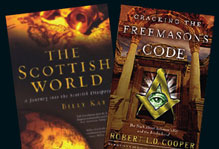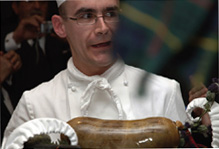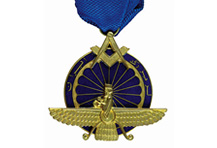 James Watt was born in Greenock and he was one of the people who made the Industrial Revolution possible.
James Watt was born in Greenock and he was one of the people who made the Industrial Revolution possible.
At the age of 18 he decided that a career as a maker of mathematical instruments was most suitable for his talents and in 1754 he travelled to London. Where came under the guidance of a member of this profession where his ability and application were noted. Within a year he was forced to return home due to ill health but persevered in his chosen profession and within a short space time following his return was confident enough to move to Glasgow (where his mother had relatives) but his attempts to set up in business as a mathematical instrument maker were thwarted by some of the Incorporations (Guilds) who regarded him as an interloper despite the fact that few, if any, craftsmen of the city were engaged in that activity. Fortunately, some of the professors of the University of Glasgow: Adam Smith* (1723 – 1790) the economist, Joseph Black (1728 – 1799) the chemist and Robert Simpson (1687 - 1768) the geometer obtained, in 1757, for him the position of Mathematical Instrument Maker to the University. He carried out his duties diligently for a period of a little more than six years during which time he took the opportunity to acquire as much scientific knowledge as time would permit. It was also during this time that he became firm friends with Joseph Black* (1728 – 1799) the eminent chemist who recognised Watt’s talent and encouraged him to pursue his interest in science. It was during this period also that he became a friend of John Robison* (1739 – 1805) who was then a student at the university and who later became a Physicist and Professor of Natural Philosophy at the University of Edinburgh.
It was whilst working at the university that he took an interest in the properties of steam at the prompting of John Robison. In 1763 he was given a working model of Newcomen’s engine, by John Anderson (1726 – 1796), professor of Natural Philosophy, which was in need of repair. Watt made the necessary repairs but also saw that there were a variety of improvements that could be made which would make the engine far more efficiently particularly adding a separate condenser.
In that year he married a cousin, Miss Margaret Miller, and left the employment of the University and set up in business as a mathematical and ‘philosophical’ instrument maker in the Saltmarket opposite St. Andrew’s Square. It was also in this year that he became a Freemason. However, his record of membership is not to be found in the register of members held by the Grand Lodge of Scotland and therefore some explanation is required. When a man was Initiated in a Scottish Lodge during the 18th century the individual's name (and occasionally occupation) was meant to be sent to Grand Lodge where the details were recorded Lodge by Lodge in registers in chronological order. Payment of one shilling was to accompanying the sending of these details. The temptation not to send details to Grand Lodge is obvious. That there are numerous instances of Lodges recorded members which do not appear in the central Grand Lodge register is proof of that! This seems to have occurred when Lodges were under financial pressure but this merely had the effect of transferring financial problems to Grand Lodge. Over time Grand Lodge reacted to this situation by creating Provincial Grand Masters who lived locally and who could therefore supervise Lodges more closely. By the early 19th century no one could be considered to be a Scottish Freemason without a certificate issued by Grand Lodge on payment by the Lodge in which the individual had been Initiated.
How then is it known that James Watt was a Freemason? During the 18th century it was the responsibility of the Lodge, not Grand Lodge, to issue each new member with a certificate proving that he was a Freemason. The certificate issued to James Watt is extant and reads:
To all and Sundry to whom these
presents Come Greetings.
Know ye that the most worshipfull
The Grand master of Scotland and Grand
Lodge aforesaid having Granted a Charter
Constituting and erecting a Lodge of free
And Accepted Masons in this place under
the stile and title of The Glasgow Royal
Arch Lodge.
These are to Certify that the Bearer
hereof Brother James Watt was Admitted
and Received and Entered Apprentice, Past
a Fellow Craft and Raised a Master After
having payd the usual dues According
to the bylaws of the Lodge and has behaved
himself as becometh
Given under our hands at Glasgow
this 10th June A.M. 5763
Rob. Dobson (?) Masr
James Wright SW
William Dick J.W.
Another question arises – how can we be sure that this James Watt is the James Watt the inventor. The answer is simply because this document is filed among his personal papers.
In addition to manufacturing mathematical instruments Watt also made and repaired musical instruments and made several improvements in manner which organs functions. However, the business could not sustain Watt and his wife and in 1767 he gave up his business becoming instead a civil engineer. He undertook a survey for a proposed Forth and Clyde but the necessary Parliamentary Bill failed to be passed and Watt ceased to be involved in the project. The following year all obstacles were overcome but the canal was designed and built by John Smeaton (1724 – 1792). Watt also undertook surveys for the Monkland Canal, one proposed to connect Perth and Forfar and the Crinan Canal. His most ambitious survey was for the Caledonian Canal (100 kilometres linking) connecting a chain of glens and lochs from Inverness to Fort William (at Corpach). Although having demonstrated the feasibility of such an enormous project Watt yet again took no subsequent part in the building of the canal which was eventually designed and built by Thomas Telford* (1757 – 1834) during the period 1803 – 1822).
In 1768 Watt applied for a patent in respect of ‘methods of lessening the consumption of steam, and consequently of fuel, in the steam engine’ and which was granted in January 1769. This patent contained specifications which led to the creation of the single reciprocating engine. Watt’s business acumen becomes manifest at this time because whilst the patent was progressing through its various stages he had the foresight to enter into a partnership with Dr John Roebuck (1718 - 1794) of the Carron Iron Work to manufacture the engine once the patent was passed. Roebuck in putting up the capital was to receive two thirds of all profits and Watt one third. Technical problems delayed production of the engine and it was during this time that Watt was engaged on his canal surveys and whilst doing so for the Caledonian Canal in 1773 he received word of the death of his wife leaving a son and daughter.
The granting of the patent ensured that he was now well known as an engineer and an invitation from Matthew Boulton† (1728 – 1809), who owned the Soho Foundry near Birmingham, to become a partner in his business. Roebuck was in debt to Boulton and Watt negotiated the transfer of Roebuck’s share of the patent to Boulton in settlement of the debt. Watt, however, was not interested in running the business the administration of which he left entirely to Boulton. Even his visits to the foundry were infrequent concentrating instead on ‘inventing’ and improving designs at home.
The Soho foundry works were by far the largest then in existence and soon after the arrival of Watt the he made changes which enormously increased the efficiency of the operation. However, even Watt’s efficiency measures could not ensure that the patented engine could be profitably produced within in the time scale of the existent patent. With the assistance of Drs Roebuck and Robison he applied, in 1774, for an extension of the period of the patent which was granted for 25 years. Engines soon started to be produced by the firm by then known as Boulton, Watt & Co. They also granted licences to mine owners all over the country to use their engines on condition that, as the patentees, they would receive one third of the value of the extra coal produced compared to that obtained by Newcomen’s engine. The income generated by this licensing agreement is indicated by the fact that from three of Watt’s engines installed at Chacewater, Cornwall, Boulton, Watt & Co. received £800 per annuum.
Watt married for a second time in 1775 to a Miss Anne McGregor, daughter of a wealthy Glasgow merchant, James McGregor, and is a strong indication, together with Drs Roebuck and Robison, that he maintained a close connection with that Scottish city.
Watt continued to work on improving the efficiency of his engine and in 1781 obtained a patent for a device which improve the regulation of motion known as the sun-and-plant wheel. He was keenly aware of the need to protect his inventions and improvements and in 1782 obtained two patents for ‘an expansive engine’ described as: ‘six contrivances for regulating the motion – double acting engine – two cylinders – parallel motion, by rack and sector – semi-rotative engine – and steam wheel. Yet another patent was granted in 1784 for another ‘rotative engine – parallel motions – portable engine and steam carriage – working hammers - improved hand gear – and a new method of working the valves. The most important of these was the double-acting engine which doubled the power without increasing the size of the engine.
Yet Watt’s ingenuity was not limited to inventing and improving engines. During 1785 he designed a new type of furnace and the ‘consumption of smoke’ and again was granted a patent for this new furnace in that year.
His constant experimentation on improvements to his engines meant that the patent previous granted to Boulton, Watt & Co. would expire before better engine could be manufactured which incorporated all the numerous improvements. Consequently they applied for, in 1785, and were granted an extension of the patent no doubt due to the numerous and complexity of the improvements to the original design. This extension would last to the end of the 18th century and once the new engine was produced Boulton and Watt became very rich, very quickly.
By now such was his fame as and engineer that the French government invited him to Paris in 1786 to advice on the best method of raising water at Marley. In Paris he met many important French scientists and thinkers including Claude Louis Berthollet (1748-1822) one of the most eminent chemists of the time. He revealed to Watt that in 1785 he had discovered the bleaching properties of chlorine and suggested he should patent the process in Britain on his return. It is an indication of Watt’s character that he declined Berthollet’s offer because the invention was not his. However, he appreciated the significance of Berthollet’s discovery and sent the details to his father-in-law, James McGregor whose main business was that of a dye-maker and bleacher. He began using Berthollet’s method in March 1787 and the effects were immediately apparent with bleached cloth being produced far quicker than had previously been possible.
When the patent on his engine expired in 1800 Watt retired and passed his share of the Soho Foundry business to his two sons, James and Gregory, and took no further part in the business. However, his fame ensured that he continued to be consulted on a variety of matters including, for example, the Glasgow Water Company moving and filtering water, advising the Admiralty on the construction of docks at Sherness.
Eight years after the death of his friend John Robison it was proposed that his complete works be published and Watt sent all Robison’s paperwork to William Playfair* (? – need to check this) who unfortunately did not have time to undertake the work and so it was passed to Sir David Brewster (1781 – 1868).
Watt returned to Scotland in 1817 and delighted friends, relatives and family with his wit and vigour. He never ceased to be interested in inventing things but at the age of 83 was no longer concerned to complete his ideas and declined to apply for patents of the one or two that he did bring to a conclusion. Much of his time since his retirement was sent defending his patent rights in numerous lawsuits. However, this was not because of monetary concerns but his firm belief in upholding the law. In all such cases his defence was simply put – an appeal for protection from the law of the land. This almost constant concern in fighting off those who would pirate his inventions as well as the intense study he daily subjected himself to, ultimately took their toll and his health, always delicate, declined sharply and he passed away at his residence at Heathfield in Staffordshire on 25th August 1819.
The esteem in which James Watt was held during his lifetime is attested to the numerous awards and distinctions he received. For example in 1784 he was elected a Fellow of the Royal Society of Edinburgh and the following year a Fellow of the Royal Society of London. He received the honorary degree of LL.D. from the University of Glasgow and shortly before his death was made a member of the National Institute of France.
His personality as described by those who knew him was one of benevolence and tolerance. In conversation he was relaxed, fluent and factually precise. Although a life time spent on engineering and inventions he was well versed in several languages and had considerable knowledge of the fine arts, history, law and ‘light’ literature. Sir Walter Scott* (1771 – 1832), a fellow Freemason, describes him in the novel the Monastery (1820):
‘Did you know the celebrated Watt of Birmingham… Mr Watt, the man whose genius discovered the means of multiplying our national resources to a degree perhaps even beyond his own stupendous powers of calculation and combination, bringing the treasures of the abyss to the summit of the earth; giving the feeble arm of man the momentum of an Afrite; commanding manufactures to arise, as the rod of the prophet produced water in the desert; affording the means of dispensing with that time and tide that which waits for no man, and sailing without that wind which defied the commands and threats of Xerxes himself. This potent commander of the elements – this abridger of time and space – this magician, whose cloudy machinery has produced a change on the world, the effects of which, extraordinary as they are, are perhaps only now beginning to be felt – was not only the most profound man of science, the most successful combiner of powers and calculator of numbers, as adapted to practical purposes – was not only one of the most generally well informed, but one of the best and kindest of human beings.’
The observations above of those who knew him and those of Sir Walter Scott in describing his personality are exactly the attributes Freemasons are encouraged to adopt – respect for the law and tolerance. Scott suggests that he met Watt and as he was in Edinburgh during 1817 it is not impossible that they did so in an Edinburgh Lodge.
Lodge James Watt, No.1215 (Glasgow) was named after him. Of all the accolades, honours and rewards given to James Watt the Inventor the fact that he graced Scottish Freemasonry was unknown until very recently. He was Initiated, Passed and Raised in The Glasgow Royal Arch Lodge 1763. Sadly this Lodge is now dormant.
† Whether Matthew Boulton was a Freemason is unknown. There is certainly a need establish if he was because if both were Freemasons the impact of their membership on their hugely successful partnership would investiagtion.



